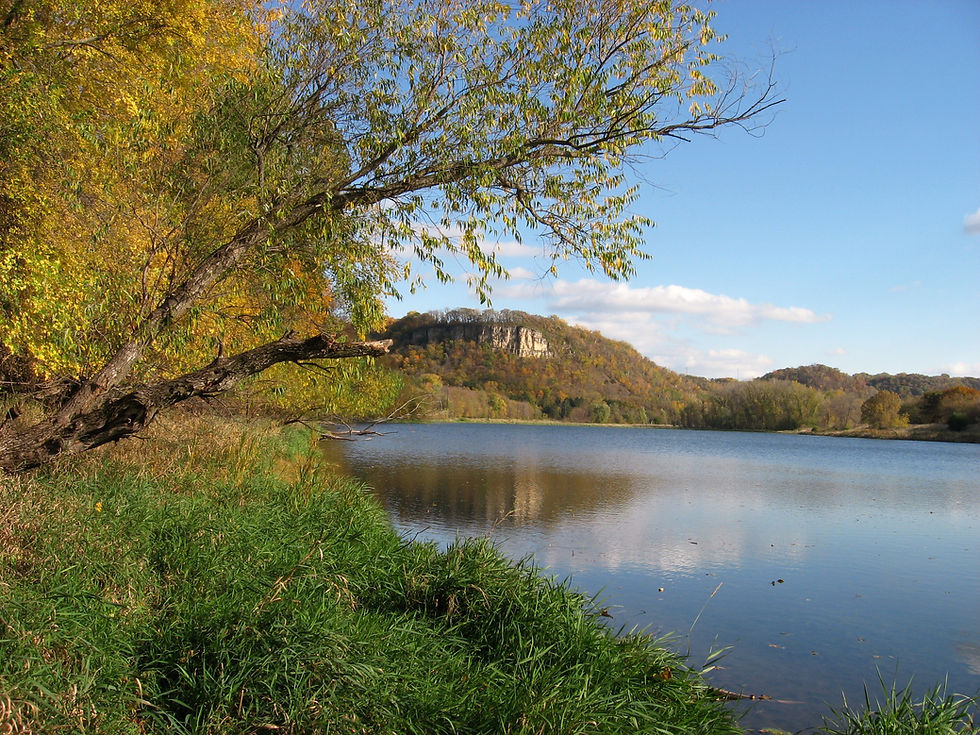Interesting Winter Bird Activity
- Bruce Ause
- Jan 23, 2018
- 2 min read

Upper Bay at Colvill Park
During two recent stretches of very cold weather; one the end of December and one in early January, I observed on numerous occasions well over 100 bald eagles around the open water on the upper bay at Colvill Park. The early morning and late afternoon feeding frenzies drew many amateur and professional photographers to the park. The eagles were feeding on the abundant populations of gizzard shad attracted out of the main river and to the warm water discharge of the XCEL generation facility.

Nine Eagles in One Tree
During mid-day, as many 25 eagles could be observed in one tree for long periods of time as they digest recent meals of fish. Near sunset, the eagles can be observed flying up into the deep coulee along Wilkinson Street. Roosting in trees here will protect them from the bitterly cold northwest winds blowing off the river.

Avid Birder at Spotting Scope
On Monday afternoon January 8th, I received a phone call from Kevin Smith, an avid birder of Hastings, reporting that a very rare bird had been observed over the weekend at Colvill Park. A tufted duck is a resident of far northern Europe and Siberia and closely resembles a ring-necked duck. Because this bird hung out with other diving ducks far from shore, about the only way to make a positive identification was with a spotting scope.. Eventually it moved downstream from Colvill Park to the open water off Greens Point in Wacouta.

Cooper's Hawk
The number of birds we have observed at our feeders since Christmas has been down dramatically because of frequent visits by a Cooper's Hawk. On January 11th, we observed this hawk swoop in and quickly dispatch one of several starlings.

Cross Country Ski Trail
Recently, cross country skiing has been excellent on the trails in the open field adjacent to the hiking trail and in the DNR wildlife management area near Wacouta Pond.

Black-Capped Chickadee
Even though we are still in January, I have observed three signs of spring already. First on January 10th, I heard the spring song of the black-capped chickadee "fee bee fee bee."

Red Oak Leaf
My second observed sign of spring is the falling of red oak leaves. Red oaks are one of the last trees in our area to drop their leaves and is a characteristic to help protect the tree from disease by reducing the number of tiny wounds created when a leaf stem separates from the twig. Reducing the number of wounds, helps the tree keep its winter reserves high.

Heavy Snow
The third sign of spring I would like to describe is the wet heavy snow we received on Monday January 22nd. This wet snow created some spectacular landscapes, but is more typical during maple syrup season the end of March. Our near term forecast predicts temperatures in the low 40's. Go figure!

Red-Bellied Woodpecker
In the midst of the Monday snowfall, birds still continued to visit our feeders.




Comments